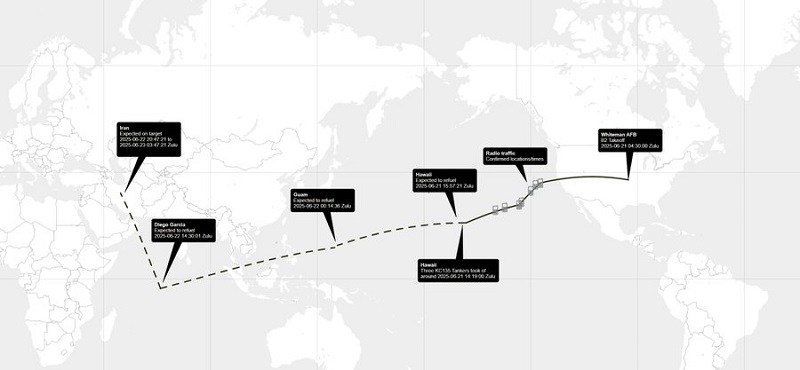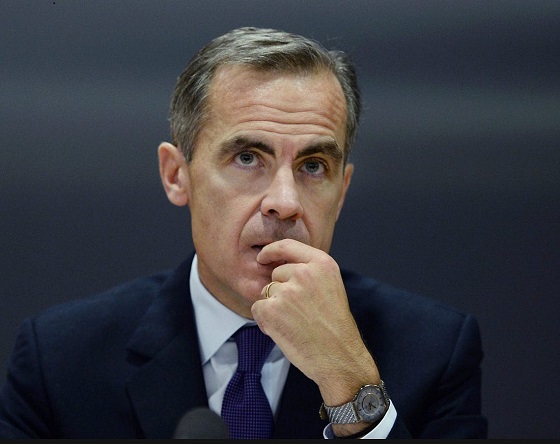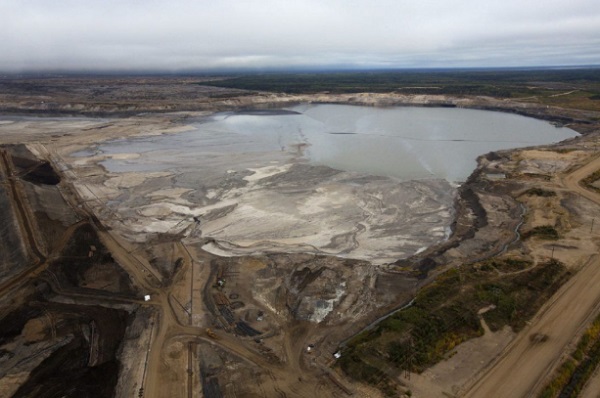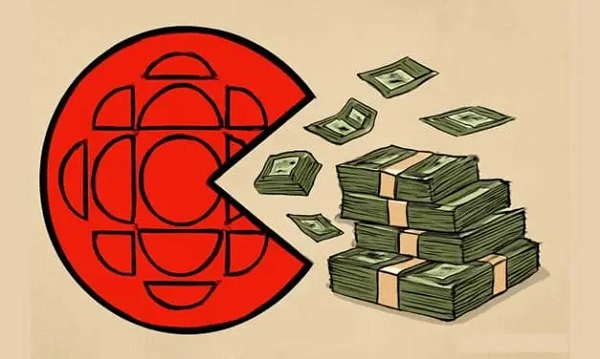Opinion
Red Deer can be more than a one-industry town afraid to diversify.

30 years ago, if you had asked me, I would have told you that Red Deer was a vibrant growth community, the commercial center for central Alberta on the leading edge of diversification. What happened? We got complacent, we got spoiled and we focused on but a single industry.
We accepted a boom/bust cyclical work force.
We thought of ourselves as industrious and innovative. Our parents were that way on the farm and we took that can-do attitude to the oil patch. First it was during the off season to supplement farm income, then we outgrew the farm and we bought bigger and fancier things for ourselves.
Houses got bigger as did our cars and toys but our families got smaller.
The busts were tolerated and during these portions of the cycle, we talked of diversifying our economy but the big bucks were still to be had in the oil patch.
Our children went to school and after graduation they drifted away to more secure albeit less remunerated careers.
I asked some former Albertans why not move back to Alberta if you can work remotely and I was told that they still need to socialize with their peers. Coming back to Alberta, they would lose their sense of worldly consciousness, back to the back woods philosophy and politics. They would lose that cosmopolitan feel and the freedom to talk openly about issues and politics.
One woman had mentioned that she grew up and got her education in Alberta, but it wasn’t until she left Alberta that she saw the opportunities and possibilities. It was like a one-way street turned into Main Street.
Today, I get frustrated as many leaders hold that waiting position for the next boom, they justify it with; “it is just taking longer this time“. We are building new homes almost 10 times faster than our population growth. More property taxes for the city just not as many new tax payers.
We are always building new neighbourhoods, even when our population decreased. We are building new neighbourhoods, even when some former new neighbourhoods, lay near empty. We could not build facilities for the citizens during the boom times because we were building new neighbourhoods.
We could not build a 50 meter pool during boom times because the prices were too high, trades were scarce due to the oil patch. We can’t build a 50meter pool now because we cannot afford the estimates given during boom times. We need funds to build new neighbourhoods.
Red Deer does have to be just a one-industry town losing it’s industry. Waiting for hand outs from other levels of government, and waiting for the next boom. Besides if we do get one more boom, then what?
History has stories of places that failed due to the collapse of their one-industry. Forestry, coal, fisheries, steel, iron, manufacturing, tobacco, asbestos, mining, even agriculture are ones that pop into my head.
We should study the places that succeeded. Those with little or no resources that became commercial successes.
Nah, we should just wait, I am sure the provincial government will give us all the cash we need. NOT.
I believe we need to embrace the new economy, and if the boom does come along it will be a bonus. Don’t you agree?
Be nice if the kids could , better yet want to move to Red Deer. There are superstars in other industries that once called Red Deer home. They could lead the diversification charge.

International
Trump’s Strike on Iran Reshapes Global Power Balance, Deals First Blow to Beijing and CRINK Axis

Some analysts say the U.S. strike marks the West’s first major blow in an emerging global war against the ‘CRINK’ alliance — China, Russia, Iran, and North Korea.
At 8:00 p.m. on Saturday, President Donald Trump confirmed that U.S. B-2 stealth bombers had penetrated Iranian airspace overnight and delivered precision strikes on multiple nuclear enrichment facilities—marking the first direct American military action targeting Iran’s nuclear program since the conflict with Israel escalated.
Trump said the strikes were “massive” and necessary to prevent the world’s most dangerous regime from acquiring the world’s most dangerous weapons.
The United States and its military had completed a strike unprecedented in history and that no other military can achieve, Trump declared in a televised address from the Oval Office, arguing that Iran had sought the destruction of Israel and America, and killed many U.S. soldiers.
The president’s remarks confirmed what international observers and Israeli defense officials had begun to piece together in the early hours of Saturday in the Middle East: that American forces had joined Israel’s rapidly expanding campaign to dismantle the Islamic Republic’s nuclear and military infrastructure—a move with historic ramifications for the balance of power in the region and for global security.
This attack, while narrowly focused on nuclear targets, may mark a broader inflection point in the strategic landscape of what some U.S. defense analysts call the “CRINK” war—referring to the de facto alliance of China, Russia, Iran, and North Korea.
This morning Mike Gallagher, the former chairman of the House Select Committee on the Chinese Communist Party and now a national security adviser, said the strike marked a return to credible power projection.
“Deterrence comes from dominant force and the willingness to use it,” he posted to X. “Last night, President Trump took a critical step toward restoring deterrence in the Middle East and around the world.”
According to senior U.S. defense officials, the strikes involved a small number of stealth bombers supported by aerial refueling tankers and surveillance aircraft operating from bases in the Middle East and Europe. The targets included Iran’s deeply buried Natanz uranium enrichment complex and secondary facilities near Arak and Fordow.
Of these, Fordow is considered Iran’s most fortified nuclear site—tunneled into a mountainside near the holy city of Qom and designed to survive conventional airstrikes. Reaching it requires specialized bunker-penetrating munitions. Only the United States possesses weapons capable of striking such hardened targets: most likely the GBU-57 Massive Ordnance Penetrator, a 30,000-pound bomb built to bore through hundreds of feet of reinforced rock and concrete. Defense sources say multiple sequential detonations would be required to break through the mountain’s layers and disable the underground enrichment halls.
Early satellite imagery and Iranian state media appeared to corroborate the targeting of Natanz, reporting heavy damage and widespread power disruptions across the site and adjacent military compounds. Iran’s Islamic Revolutionary Guard Corps issued a statement vowing retaliation but acknowledged that “enemy aircraft penetrated undetected and struck sensitive infrastructure.”
The United States, by committing its own strategic assets to destroy critical Iranian military infrastructure, has gained the initiative in what could be seen as the first true strategic victory for the West in World War III—a long, undeclared conflict characterized by economic warfare, proxy combat, gray-zone cyber operations, and regional insurgencies. The Pentagon and White House now face critical choices that could significantly shape the remainder of this century.
The strike could come at a high cost, but also could deliver epoch-shifting, decisive strategic benefits. Iran supplies drones to Russia, subsidizes oil to China, and provides weapons to terrorist actors that threaten U.S. bases and allies from the Gulf to the Mediterranean, military and intelligence analysts argue. Its defeat would damage the CRINK axis, remove a key enabler of great power revisionism, and restore American leverage after years of attritional conflict.
Trump’s language Saturday night suggested he may favor such a path.
In Jerusalem, Israeli Prime Minister Benjamin Netanyahu praised the American action as “a decisive blow against the terror regime in Tehran.” In a national address hours after the U.S. confirmation, Netanyahu said, “This is not just Israel’s fight—the free world has acted.”
Israeli media reported that the Israeli Air Force had provided electronic warfare support and real-time intelligence for the U.S. strikes, though officials declined to confirm operational details. In Tel Aviv, civilians remained under heightened alert, but there were signs of cautious optimism. “The alliance between Israel and the United States is at full strength,” one senior Israeli official told local media. “We have shifted the strategic calculus in the region.”
Iran’s Supreme National Security Council convened an emergency session overnight. Government officials condemned the strikes as an act of war and said Tehran would respond “at a time and place of our choosing.” As of Sunday morning EST, no immediate missile launches had been detected. However, Western intelligence agencies were monitoring known Iranian proxy forces in Lebanon, Iraq, Syria, and Yemen for signs of mobilization.
On Iranian social media channels, state-linked accounts circulated images of damaged facilities alongside calls for retaliatory “martyrdom operations” against U.S. and Israeli targets.
The joint U.S.-Israeli operation followed weeks of escalating hostilities, beginning with Israeli airstrikes deep inside Iranian territory that disabled radar arrays, weapons depots, and drone launch sites. Iranian retaliation—including missile and drone attacks on Israeli cities—prompted increasingly urgent warnings from Western capitals that the situation risked spiraling into open regional war.
In Tehran, BBC correspondents reported a rare mix of panic and defiance among civilians. Some feared a full-scale war was imminent. Others expressed anger at their government for failing to protect key military and nuclear assets.
European leaders called for restraint. In an interview late Saturday night EST, German Chancellor Friedrich Merz described the strike as “a painful but necessary step.” French officials warned of “a dangerous path toward uncontrollable conflict.”
In Washington, current and former intelligence officials said the operation signaled a fundamental shift in U.S. posture.
The Pentagon later confirmed the deployment of additional U.S. forces to the region, including carrier strike groups and long-range missile defense batteries.
Whether the operation succeeds in deterring Iran from restarting its nuclear weapons program—or sparks a wider war in the Middle East—remains uncertain. What is clear is that the seismic shift beneath Fordow began in Iran, but its aftershocks are now reverberating through the war rooms of Beijing and Moscow.
Editor’s Note: The first version of this story was updated to paraphrase President Trump’s remarks, and add a comment from former senator and CCP committee leader Mike Gallagher.
The Bureau is a reader-supported publication.
To receive new posts and support my work, consider becoming a free or paid subscriber.
Invite your friends and earn rewards
National
Preston Manning: “Appearing to Cope” – Is This The Best We Can Do?

Many years ago, when I was in the consulting business, I visited Washington DC to re-connect with some Republican contacts I had previously made in California and who had since risen to positions of influence with the Nixon administration. In their California days they had been idealistic advocates of change, but when I met them in Washington most of that idealism had evaporated. As they ruefully explained, “ Here in Washington DC, the real name of the game is simply “appearing to cope”.
And how do politicians in high office play this game? When issue X arises, hold a news conference or give a speech acknowledging X’s existence and expressing deep concern. Convene a hearing or a conference on X, calling for decision makers and experts on X to attend and testify. Issue an executive order or send a draft bill to Congress with X in the title, the preamble, and the news release. In other words, substitute announcement for action, conferencing and discussion for results, and appearance for substance.
Flash forward 50 years and regrettably the “appearing to cope” strategy is very much alive and now practiced in Canada by the newly elected Carney government.
Is Infrastructure Development, long neglected and even obstructed by the discredited Trudeau administration, a pressing issue? Of course. So, borrowing from the Conservative platform, now make Infrastructure Development a theme of speeches and commentaries by Liberals seeking and winning election. Post election, convene a federal provincial conference with Infrastructure Development high on the agenda and post-conference communiques announcing “cooperation” on the subject. Introduce a bill in parliament purporting to facilitate Infrastructure Development by reducing federal regulations and interprovincial barriers while prophesying billions of dollars of investment in Infrastructure Development. As yet no actual infrastructure development has occurred – there are no shovels in the ground – but the appearance has been given that the federal government is successfully addressing the issue.
“Appearing to do” as a substitute for actually doing is now complemented and amplified in this age of social media by the ease with which governments and politicians can also “appear to be” something or someone they are not. The exhortation to “Do, rather than appear to do” should now be accompanied by that of the old Latin motto – Esse Quam Videri – “Be, rather than appear to be”.
As the contractors complete the future Chamber of the House of Commons in the refurbished Parliament Building in Ottawa, maybe they should carve into the ceiling of the Chamber – in a prominent place visible to all members of the House. “Do, rather than appear to do. Be, rather than appear to be.” Would not the acceptance and practice of those two exhortations render our politics and our government more worthy of public trust?
-

 Alberta17 hours ago
Alberta17 hours agoCalls for a new pipeline to the coast are only getting louder
-

 Alberta2 days ago
Alberta2 days agoAlberta announces citizens will have to pay for their COVID shots
-

 Alberta2 days ago
Alberta2 days agoAlberta is investing up to $50 million into new technologies to help reduce oil sands mine water
-

 Alberta18 hours ago
Alberta18 hours agoAlberta pro-life group says health officials admit many babies are left to die after failed abortions
-

 Bruce Dowbiggin2 days ago
Bruce Dowbiggin2 days agoWOKE NBA Stars Seems Natural For CDN Advertisers. Why Won’t They Bite?
-

 Aristotle Foundation2 days ago
Aristotle Foundation2 days agoThe Canadian Medical Association’s inexplicable stance on pediatric gender medicine
-

 Business2 days ago
Business2 days agoThe CBC is a government-funded giant no one watches
-

 Business16 hours ago
Business16 hours agoCanada’s economic pain could be a blessing in disguise






